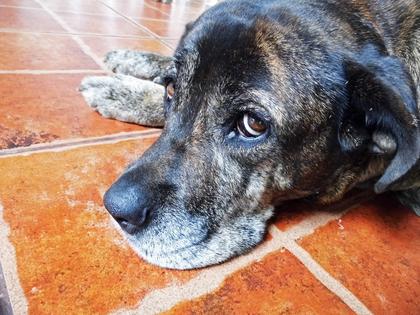Pet World: Helping your pet re-adjust for your eventual return to work
Dear Cathy,
I’m working from home during the pandemic and have taken to walking my dog every weekday during my 9:30 a.m. break. What will happen when I inevitably go back to work? She has developed a regular bowel movement during this time, and it would be impossible for me to run home and let her out. Do I need to be concerned?
–May, Iowa
Dear May,
When things change in our lives, our pets are definitely impacted. The good news is dogs and cats can adapt to change; it just may take them a few weeks versus a few days to adjust. About two weeks before returning to work, start acting like you are going to work. Get up when you would normally get up for work. Feed and walk your dog as if you were heading to work rather then when you do now. Introducing a new routine over the next few weeks is the best way to help your dog establish a new routine for when he can relieve himself.
Dear Cathy,
My daughter rescued a one-year-old, mixed breed dog from Alabama. He is a smart and very loving dog. The dog interacts with everyone in the family but when he goes to my 21-year-old grandson, he growls, and the hair stands up on his back. We can't understand why he does that more to one grandson than the other. It's very disturbing. Any advice?
–Thea, Lake Grove, New York
Dear Thea,
We can’t be sure why a dog doesn’t like someone, but there are things you can do to improve their relationship. Buy canine pheromone spray and spritz it on your son, so the dog picks up the calming scent and begins to associate it with your grandson. You also can get plug-in pheromones for the home or a pheromone collar or DAP collar (Dog Appeasing Pheromone collar) for the dog. These artificial pheromones mimic the natural pheromones mother dogs produce to calm their puppies. Next, have your grandson toss the dog treats during every visit over the next few weeks. What you want is the dog to associate your grandson with something good. Treats are good. Eventually, your daughter’s dog should come into the room and look at your grandson as a treat dispenser and not as a threat. So long as your grandson never yells around the dog or gets mad at the dog, the dog should begin to trust him, and their relationship will improve.
Dear Cathy,
I have a 13-year-old male Shiba Inu and a one-year-old female Shiba Inu. We brought the female home when she was eight-weeks-old. Needless to say, my older guy isn't happy about her being here. Before her arrival, my male dog was calm, mellow, easy-going, loveable, and didn’t bark. My female is a barker, is hyper, wants to be the boss, and has gotten my male dog so nervous he won't eat if she's near him. He doesn’t even want to come inside if she's in the house. I'm at my wit's end. Any ideas will be helpful.
–Susan, Huntington, New York
Dear Susan,
When introducing a new pet to an established older pet in the home, it can take time for them to adjust. But a year is plenty of time for them to have gotten used to each other. Your female dog has come in and become the dominant dog in the home and that has stressed your older, male dog. Because their dynamics are established, it can take longer to settle everyone down, but here is what I suggest.
First, get plug-in canine pheromones for several rooms in the home and pheromone collars for each dog. These have been scientifically proven to calm dogs.
Second, get an Anxiety Wrap® or Thundershirt® for your male dog. While they are used for thunderstorms or fireworks, these wraps also can help stressed pets feel less anxious. Your male dog can wear it all the time if it helps. Also, look for over-the-counter, anti-anxiety supplements for both dogs because the more relaxed they both are, the less likely they will be anxious around each other.
Next is training. Your female needs basic obedience training. Start training her to sit, stay, heel, down, and come. While the commands are important for her to learn, it’s the training itself that can help redirect her energy. Training forces her to look to you for instruction and leadership, which can make her less dominant overall with the other animals in the home.
========
(Cathy M. Rosenthal is a longtime animal advocate, author, columnist and pet expert who has more than 25 years in the animal welfare field. Send your pet questions, stories and tips to cathy@petpundit.com. Please include your name, city, and state. You can follow her @cathymrosenthal.)
(c) 2020 DISTRIBUTED BY TRIBUNE MEDIA SERVICES, INC.










